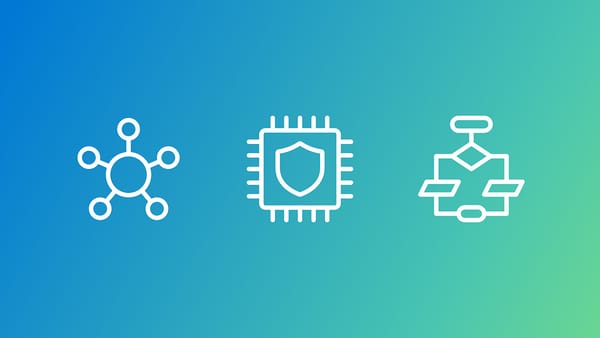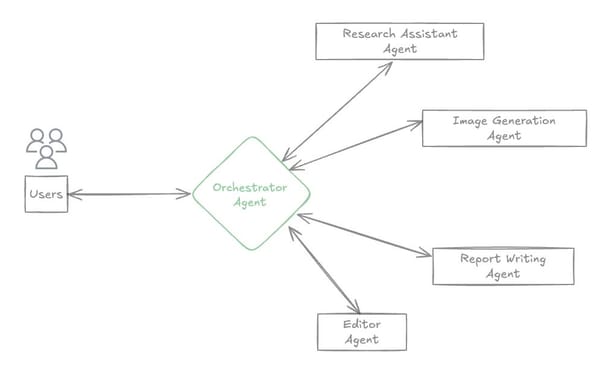Breaking the Mold: Top Architect Christian Ciceri on Why Career Limits Aren’t Defined by Technical Skills

The Evolving Role of Software Architects in the AI Era

Software architecture is undergoing rapid transformation — influenced by both the accelerating pace of software development and the surge in artificial intelligence (AI) capabilities.
---
From Traditional Architecture to Modern Complexities

Interviewee: Christian Ciceri — Software Architect, Co-founder of Apiumhub, Author of Software Architecture Metrics
Historically, architects focused on:
- System design
- Module division
- Technology decisions
These priorities emphasized stability, maintainability, and deep mastery of the tech stack.
However, with cloud-native architectures, microservices, large-scale distributed systems, and low-code/no-code platforms, complexity has risen sharply. Today's architects must:
- Choose appropriate technologies.
- Maintain architectural health in fast-iterating environments.
- Preserve team efficiency amid continuous delivery.
---
The Impact of AI on Architecture Work
AI tools now enable:
- Automated code generation
- Intelligent testing
- AI-assisted design
These capabilities mean architects no longer need to manually create dependency diagrams or diagnose performance bottlenecks. AI can surface issues and optimization opportunities quickly.
Yet, human insight remains vital:
> Ensuring AI assists rather than replaces architects is now a core challenge.
Architects must combine technical competence, business acumen, and data-driven decision-making to guide teams effectively.
---
Interview: Measurable, Evolvable Architecture

Context: InfoQ interviewed Christian Ciceri about measurable, evolvable architecture, AI’s influence on architectural work, and maintaining quality in a fast-changing environment.
Career Journey
Ciceri moved from hands-on development to architectural leadership — encountering:
- Rigid processes
- Long delivery cycles
- Low adaptability in enterprises
In 2014, he co-founded Apiumhub to embed agile methodology and strong architecture into business strategy.
Core philosophy:
> Robust yet adaptable systems help deliver quality software that evolves alongside business needs.
---
Observability and Governance
Ciceri stresses:
- Observability is more than runtime metrics.
- Governance should monitor all system attributes.
- Fitness functions in evolutionary architecture help detect early signs of degradation:
- Reduced development speed
- Increased defects
- Performance decline
---
AI as an Architectural Assistant
AI can:
- Analyze metrics
- Suggest improvements
But AI cannot replace human judgment:
> "Only under human guidance can AI become a truly productive tool."
---
Key Insights from the Q&A
On Measurement vs. Vision
- Metrics drive objectivity in discussions.
- Vision remains essential for team alignment.
On AI Use in Architecture
- AI helps explore possibilities.
- Decisions must stay human-led.
Cultural vs. Technical Resistance
- Building architectural culture is better than creating a separate architecture department.
- Any engineer can learn architecture — but it requires continuous study.
---
Continuous Architecture & Observability
Integrating Observability
- Continuous monitoring using architectural unit tests.
- Detect gradual degradation through trends in speed, defects, and performance.
Signals of "Unobservability"
- Difficulty handling increased load
- Slow release cycles
- Growing defect rates
---
Metrics — Use and Misuse
Approach:
- Metrics should emerge from real pain points.
- Avoid rigid enforcement; integrate into team culture.
Common misuse:
- Test coverage — numbers alone don’t prove quality.
---
AI in Architectural Monitoring
AI can assist with:
- Metric analysis
- Suggesting optimizations
But automated optimization without human oversight is still science fiction.
---
The Golden Rules for Architects
Essential Traits
- Analysis, Leadership, Empathy, and Curiosity — curiosity fuels adaptation and innovation.
Recommended Resources
- Domain-Driven Design books
- Vladik Khononov’s Balancing Coupling in Software Design
The Golden Rule
> Remove the 'I' from 'architecture' — decisions must create a shared team vision.
---
Related Reading
- India enters AI tool “zero-cost” era! …
- Meta exposed for earning 10% of annual revenue from scam ads | Q News
---
AI Platforms for Architects & Creators
Platforms like AiToEarn offer:
- Open-source frameworks for AI-assisted content creation
- Multi-platform publishing (Douyin, Kwai, WeChat, Bilibili, Facebook, Instagram, LinkedIn, Threads, YouTube, Pinterest, X)
- Integrated analytics and model ranking (View Rankings)
These tools align with Christian Ciceri’s principle:
> Technology is most valuable when it empowers collective creation and supports sustainable impact.
---

---
If you’d like, I can condense this entire interview into a short actionable “Architect’s AI Survival Guide” so readers get clear bullet points instead of a long transcript. Would you like me to prepare that?




